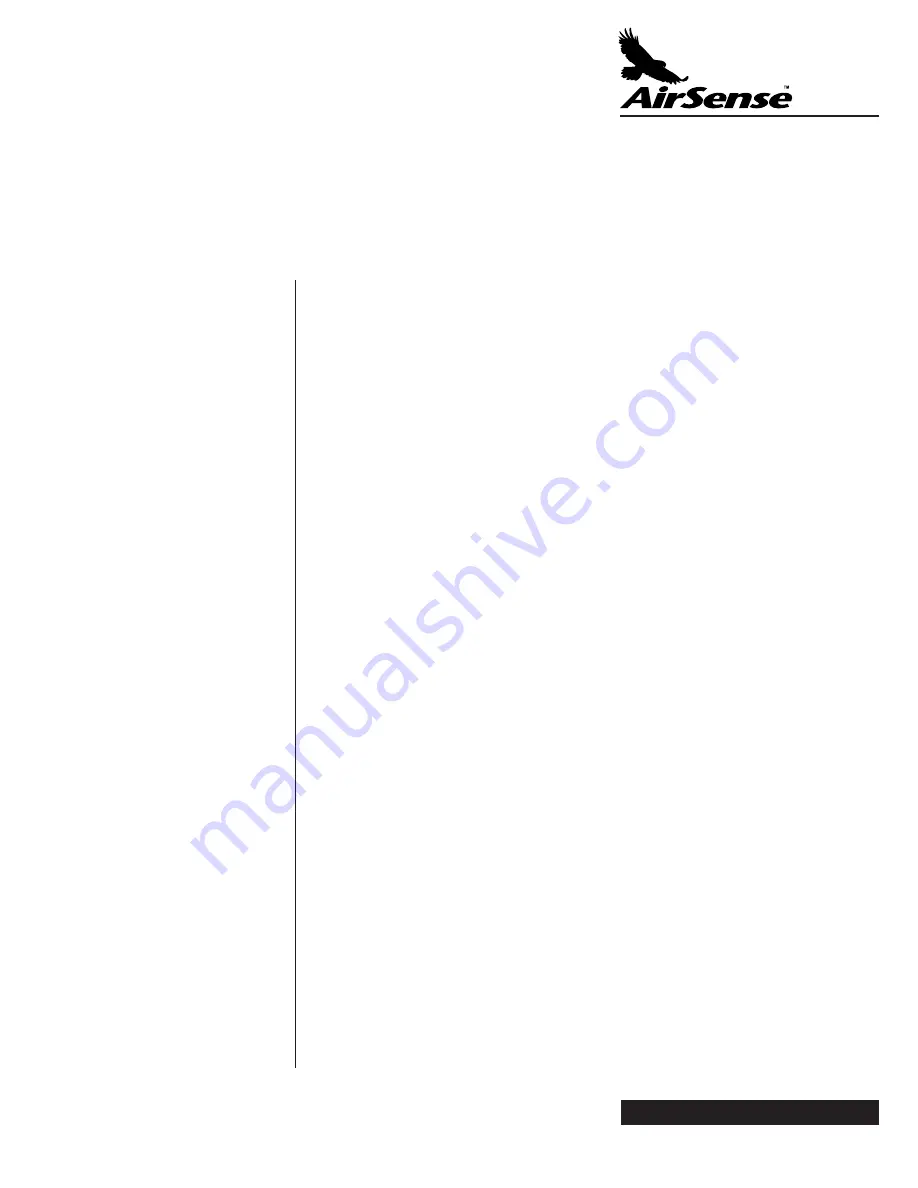
World Patents Pending ©AirSense Technology Ltd. 1999
ISSUE 2.4
Page 29
T E C H N I C A L
.
M A N U A L
the alarm level and 0.1% to overcome the residual reference signal. The time taken for
the pollution level at the outlet to rise is “t” in the equation:
Cr
= Cs 2 ( 1 -
ˆ
-t/T
)
where Cr
= 3.4%
Cs
= 3.5%
T
= V / R
= 5000/41.6
= 120 mins.
transposing:
t
= T 2 ln( Cs / (Cr - Cs) )
= 120 x ln( 3.5 / 0.1)
= 427 mins
The alarm will be activated until the pollution at the output has fallen from 3.5% obs/
m to 0.1% obs/m. It is given as “t” in the equation:
Cr
= Cs 2 ˆ
-t/T
where Cr
= 0.1%
Cs
= 3.5%
T
= 120 mins.
transposing:
t
= T 2 ln( Cs / Cr )
= 427 mins
as before
These figures must have added to them the transport time (which is insignificant
compared to them) and they illustrate, very clearly, a very large problem. It can be
argued that a step change in the external pollution will never occur and represents the
worst case. This is true, but, specifying that the pollution at the source will take 1 minute
to rise to 5% will not provide significant improvement on the figures calculated above.
A possible solution is to increase the effectiveness of the filter. If the filter is made 90%
efficient then Cs becomes 0.5% in the above equations and:-
t
= T 2 ln( Cs / Cr )
= 193 mins
If the filter could be made better than 98% efficient then the detector would approach
alarm and, although it would not be sent into alarm, it would become extremely
sensitive to any smoke added in the room. Added to this, if the filter is this efficient,
then it could arguably be improved to remove nearly all pollution from an outside






























